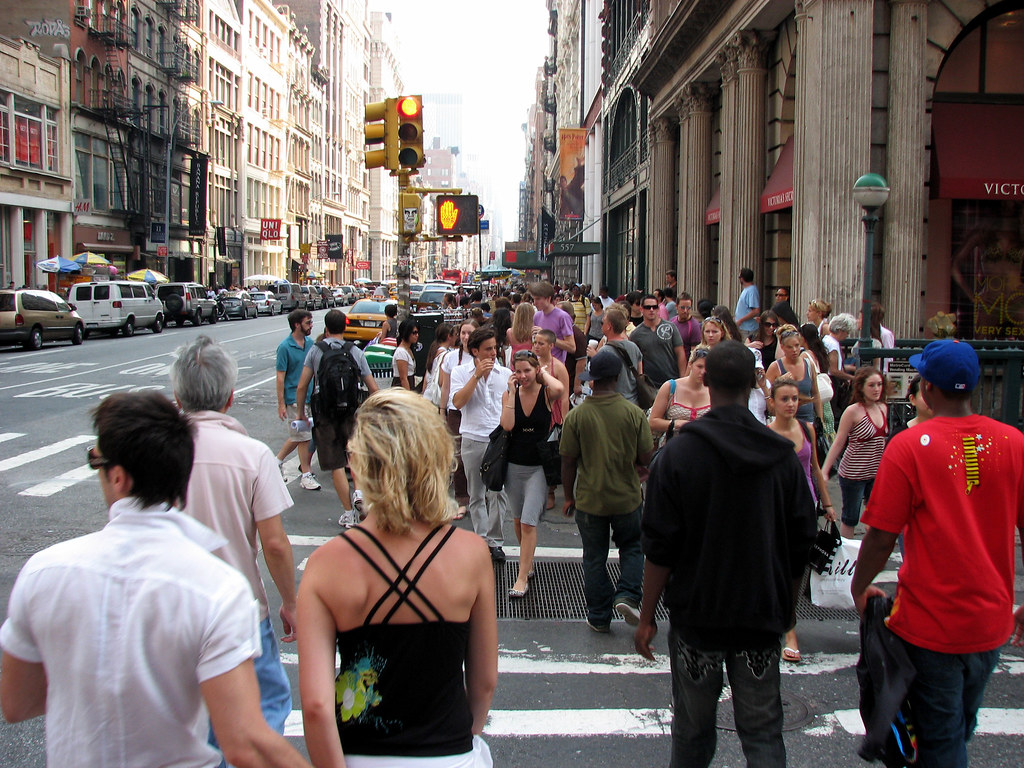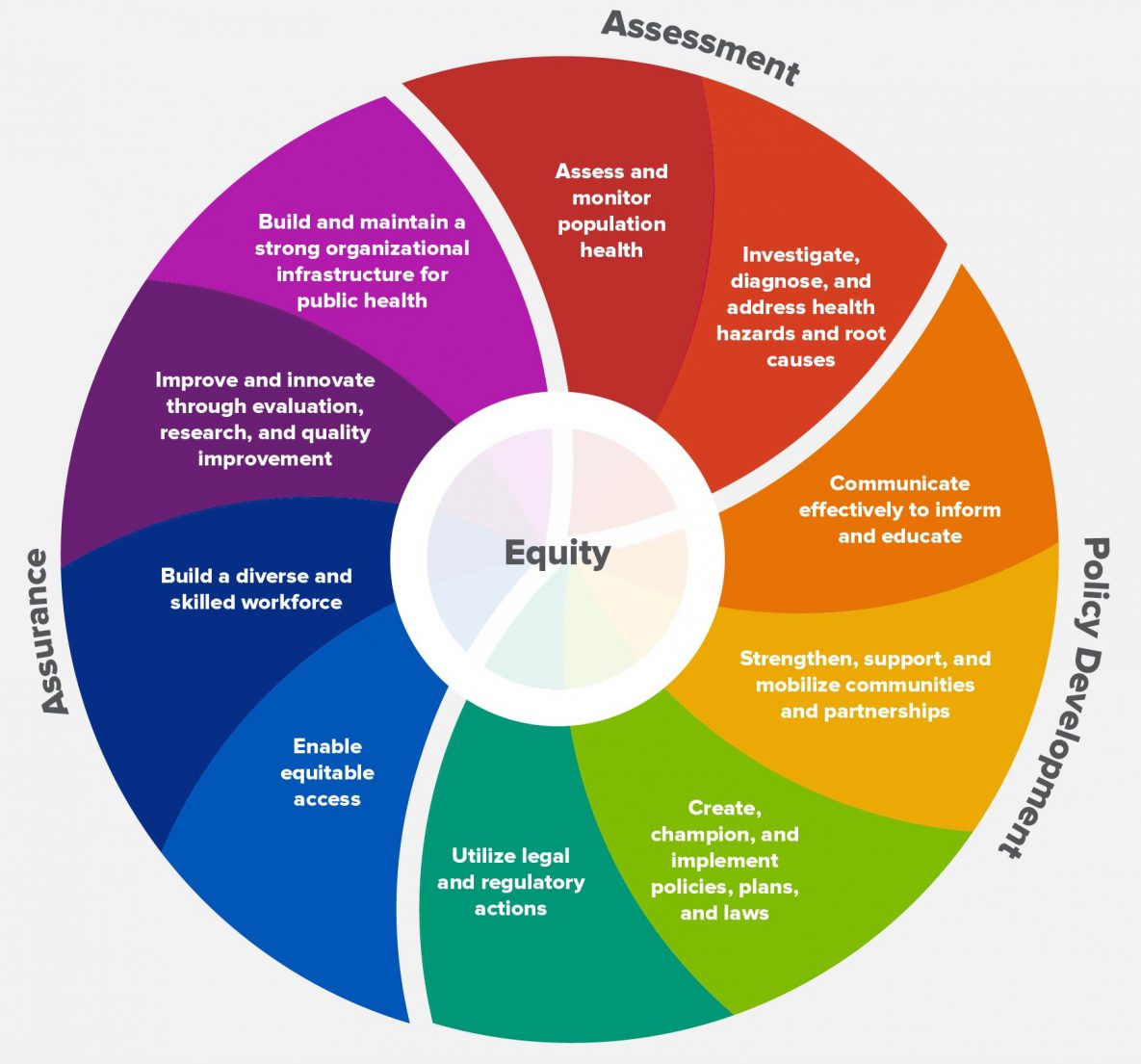Transportation and Public Health
A focus on community well-being through improved mobility

As defined by the American Public Health Association, “Public health promotes and protects the health of people and the communities where they live, learn, work, and play.” Public health can be understood as focusing on the promoting the health of a community or of the general population, not just those who are currently dealing with an illness or disease. In this definition, it is clear that the realm of public health reaches far broader than just health care services.
How is public health managed?
The network of organizations that make up the public health system is defined by the Centers for Disease Control and Prevention (CDC) as “all public, private, and voluntary entities that contribute to the delivery of essential public health services.” The CDC identified 10 essential public health services that are used as frameworks for public health priorities, initiatives, and programs:
- Monitor health status to identify and solve community health problems
- Diagnose and investigate health problems and health hazards in the community
- Inform, educate, and empower people about health issues
- Mobilize community partnerships and action to identify and solve health problems
- Develop policies and plans that support individual and community health efforts
- Enforce laws and regulations that protect health and ensure safety
- Link people to needed personal health services and assure the provision of health care when otherwise unavailable
- Assure competent public and personal health care workforce
- Evaluate effectiveness, accessibility, and quality of personal and population-based health services
- Research for new insights and innovative solutions to health problems

How does transportation intersect with public health?
Transportation and public health intersect on the community level in many activities. These activities include, but are not limited to, the following:
- Ensure individuals who do not drive can remain active in their communities
- Supporting active transportation, including safe walking/biking routes to schools
- Ensuring people have access to health-promoting recreation opportunities
- Ensuring people can choose safe neighborhoods to live in and still have access to essential destinations
Partnerships between transportation and public health
Potential partners in the public health space can include state and local public health departments, local, state, and national non-profits focused on public health, urban and community planners, and others interested in community health, well-being, and safety. In addition, it is important to note that public health often coordinates with health care entities to support and expand their work; therefore, NCMM encourages coordination between the two sub-sectors of health.
For further investigation . . .
Healthy Built Environment Linkages Toolkit
This Toolkit is intended to support the inclusion of health considerations within community planning and design. It is designed as a quick reference to the body of research evidence which describes how our built environment can influence population health.
Scoping Assessment of Transport Design Targets to Improve Public Mental Health
This assessment aims to identify potential research and innovation targets to better leverage transportation design for mental health promotion.
Additional resources
Needham Community Council Rides to Health Care
Needham Community Council – Needham, MA
In 2017, the Needham Community Council began supplementing its volunteer driver medical transportation program with trips provided through the ridehailing company, Lyft. Lyft rides were funded through the Needham Community Council operating budget and a donation from Beth Israel Deaconess Hospital – Needham.
Engaging Older Adults in Mobility Management
Brookline Council on Aging – Brookline, MA
Transportation Resources Information Planning and Partnership for Seniors (TRIPPS) is an initiative of the Brookline Council on Aging. TRIPPS launched in 2015 with initial funding through a grant from the Massachusetts Department of Transportation using federal 5310 funding. We provide information, resources, and support to older adults in Brookline who are looking for transportation options. Our focus has been on older adults who are either not driving or are transitioning from driving to other modes. About 70 percent of our older adults who we work with do not own a vehicle.
Seniors on the GO
Gloucester Health Department – Gloucester, MA
Cape Ann Seniors on the GO launched in October 2019 across the communities of Gloucester, Rockport, Essex and Manchester by-the-Sea to meet an identified need of improving access to healthy food and opportunities for physical activity among low income older adults through increased transportation access. This pilot grew out of the work of the Cape Ann Mass in Motion coalition, a part of the Massachusetts Department of Public Health’s Municipal Wellness & Leadership Program. The need for food and physical activity access was identified through root cause analysis and examining high rates of chronic disease among older adults in our Cape Ann communities. Over half of older adults who reside in Gloucester have four or more comorbidities.
RideLink-Transportation for Older Adults
Dakota County Community Services, “The Rapid” – Dakota County, MN
RideLink is a network of five area transportation providers that together provide older adults (age 60+) with door-to-door transportation as a complement to the fixed route bus. RideLink can be utilized for medical appointments, shopping trips, and recreational trips, which sets it apart from other options in the area that limit rides for older adults for specific purposes. RideLink’s providers have multiple types of vehicles that provide service to those who use a wheelchair accessible, and also accommodate service animals and caregivers.
In-House Microtransit in Rural Massaschusetts
Franklin Regional Transit Authority – Greenfield, MA
In 2019, FRTA launched the FRTA Access microtransit program. In contrast to many microtransit programs that are contracted out to a third-party company, FRTA operates its microtransit in house: FRTA upgraded its scheduling software to allow riders to book on-demand rides, and uses its existing demand-response vehicles to make the trips. Eligible demand-response riders have priority when they reserve in advance, and then any remaining capacity is open to the general public through the FRTA Access app. Initially, riders could only summon rides through the app, but over time FRTA also added an online reservation as some parts of the region lack good cell coverage.
Taxi-Based Employment Program in Partnership with WIB
Franklin Regional Transit Authority – Greenfield, MA
In April 2021, the Franklin Regional Transit Authority (FRTA), which provides transportation in 41 communities in rural Western Massachusetts and fixed-route services in the small city of Greenfield, added a new pilot to expand mobility for workers needing to commute to late night and early morning shifts. In partnership with the local Workforce Board, FRTA received a grant to fund taxi rides for workers needing to get to second and third shift jobs during hours when public transit was not operating. In addition to getting a ride to work, participants could also stop at a childcare facility if they needed to drop off or pick up their children on the way.
